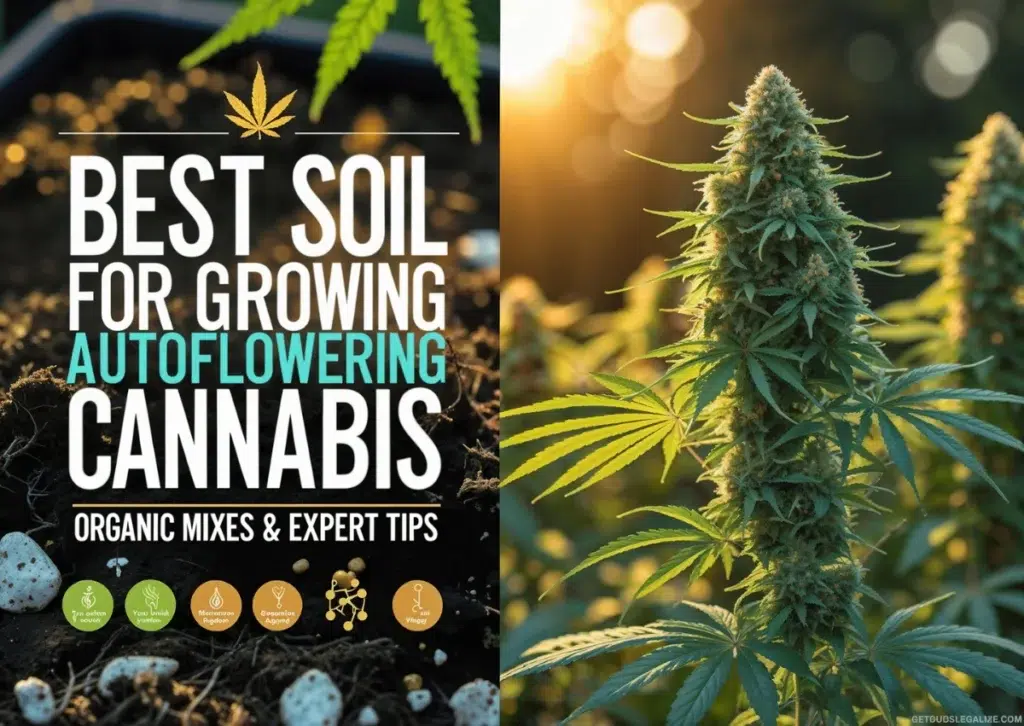How to Treat And Cure Cannabis Powdery Mildew: Complete Guide
White powdery mildew is a fungal disease that affects many plants, including cannabis. It is caused by different species of fungi that belong to the order Erysiphales. This mildew can reduce the yield and quality of your cannabis, as well as make them more susceptible to other pests and diseases.
In this blog post, we will explain what causes powdery mildew, how to prevent it, and how to treat and cure it if it occurs.
What Does Powdery Mildew Look Like?
Powdery mildew appears as white or gray patches of powdery growth on the leaves, stems, buds, and flowers of cannabis plants. It may also cause yellowing, curling, or distortion of the affected parts. The mildew can spread quickly and infect the entire plant if left untreated.
How Does Cannabis Get Powdery Mildew?
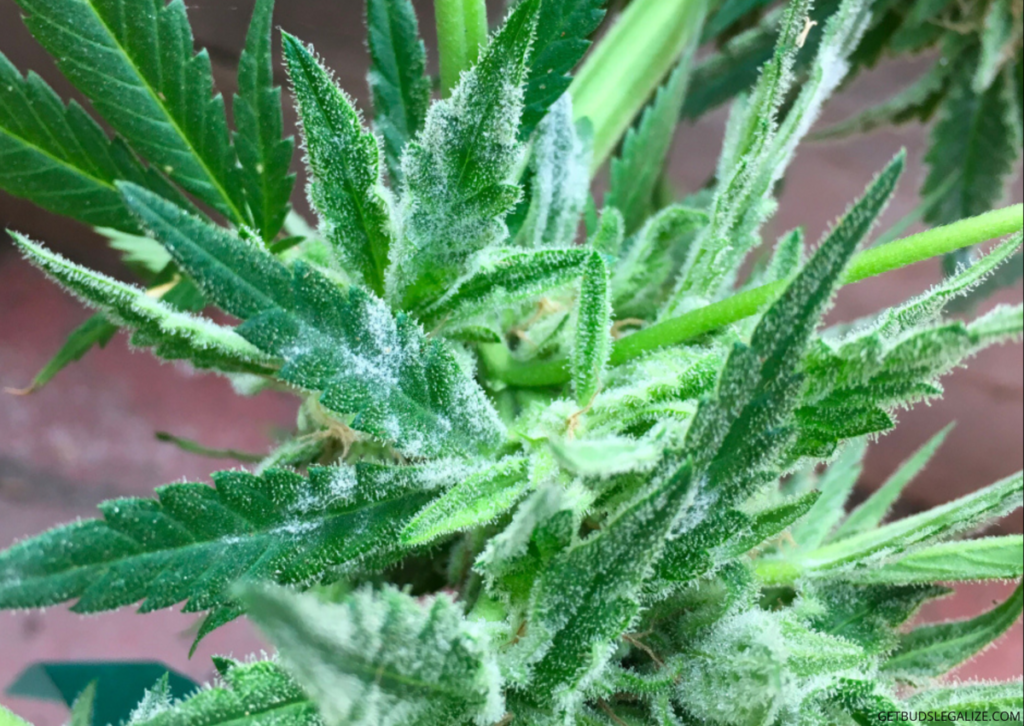
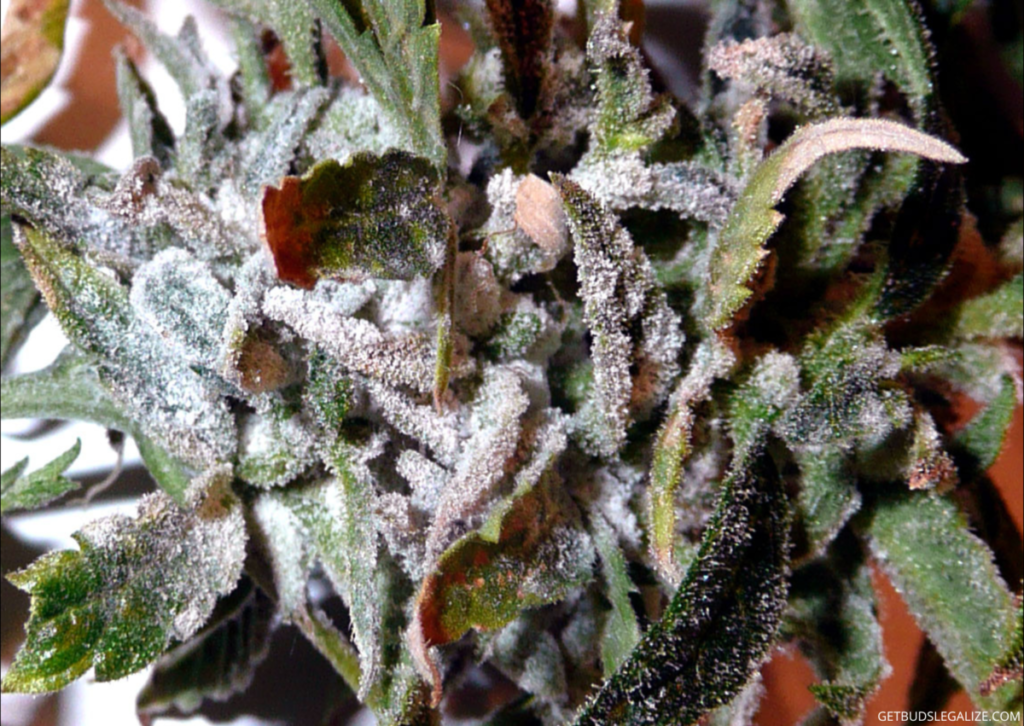
Powdery mildew spores are airborne and can travel long distances. They can also be carried by insects, animals, humans, or contaminated tools and equipment.
The spores can survive on plant debris or in the soil for months or years. They germinate and infect marijuana plants when the environmental conditions are favorable, such as high humidity, low light, moderate temperature, and poor air circulation.
How to Treat Cannabis Powdery Mildew
The best way to treat cannabis powdery mildew is to prevent it from occurring in the first place. However, if you notice any signs of it on your plants, you should act quickly and follow these steps:
1. Remove and dispose of any infected plant parts or debris. Do not compost them, as this may spread the spores to other plants.
2. Spray the remaining healthy plant parts with a fungicide that is safe and effective for cannabis plants. You can use organic or synthetic products, depending on your preference and availability. Some examples are neem oil, potassium bicarbonate, sulfur, copper, or Trifecta Crop Control.
3. Repeat the spraying every few days until the powdery mildew is gone. Follow the instructions on the product label for the dosage and frequency of application.
4. Monitor your plants closely for any signs of recurrence or new infection.
How to Kill and Remove Powdery Mildew on Cannabis During Flowering
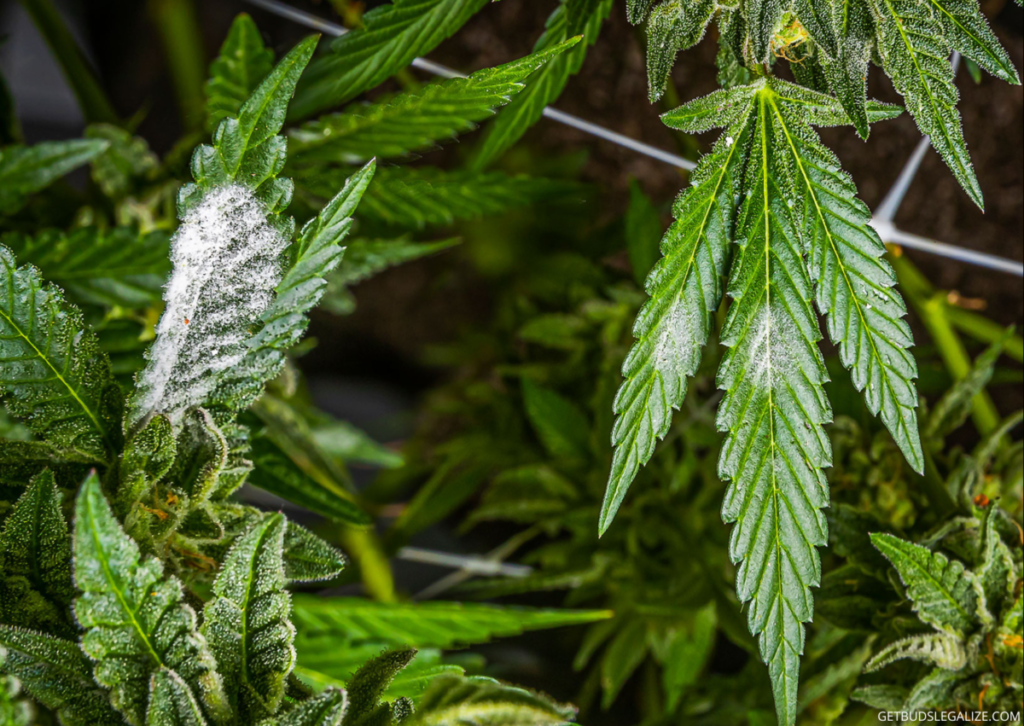
Killing cannabis powdery mildew during flowering can be challenging, as you want to avoid harming the buds or affecting their flavor and potency. You also want to avoid using any products that may leave residues or contaminants on the buds. Therefore, you should use natural or organic fungicides that are safe for cannabis plants and humans. Some examples are:
• Trifecta Crop Control:
This is a natural product that contains essential oils, soap, vinegar, and citric acid. It works by disrupting the cell membrane of the fungi and preventing them from reproducing. It also boosts the plant’s immune system and repels other pests.
Trifecta Crop Control is safe to use throughout the flowering stage, as it does not affect the taste or smell of the buds.
• Milk:
This is a cheap and easy home remedy that has been proven to be effective against powdery mildew. Milk contains proteins and enzymes that inhibit the growth of fungi and stimulate the plant’s defense mechanisms. You can use any type of milk, but skim milk is preferred as it has less fat and sugar.
To use milk as a fungicide, mix one part of the milk with nine parts of water and spray it on your plants every few days until the mildew is gone.
• Baking Soda:
This is another common household item that can help control powdery mildew. Baking soda raises the pH level of the plant’s surface, making it inhospitable for fungi to grow. It also acts as a surfactant, which helps the spray stick to the plant better.
To use it as a fungicide, mix one tablespoon with one gallon of water and spray it on your plants every few days until the mildew is gone.
How to Treat Cannabis Powdery Mildew Indoors
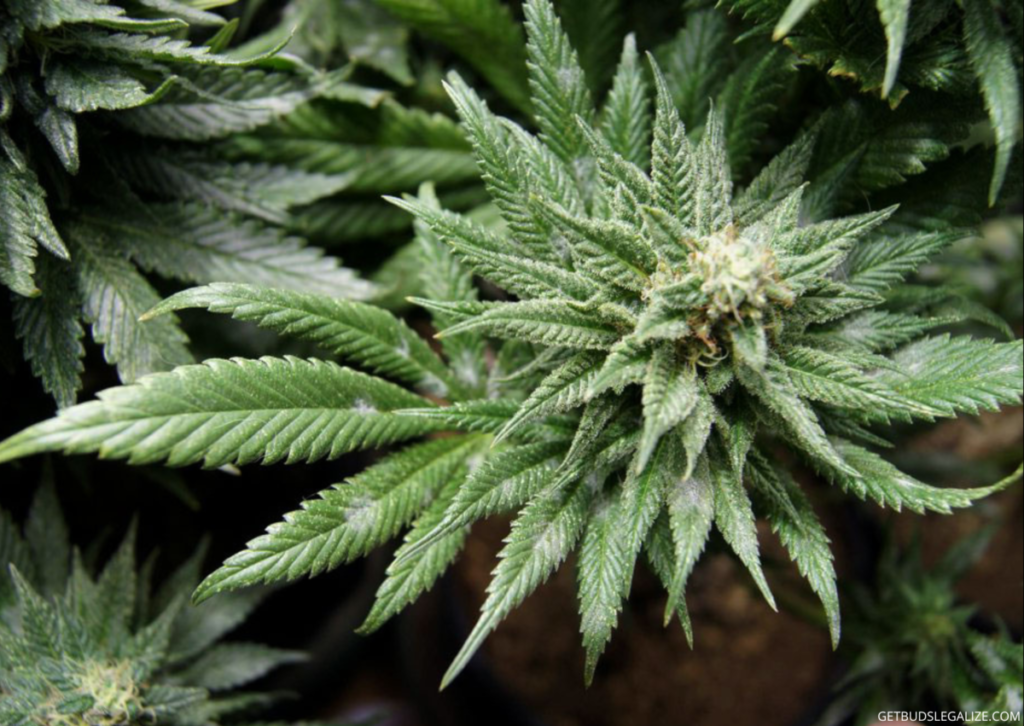
Treating white powdery mildew on cannabis indoors requires not only spraying your plants with a fungicide but also improving your environmental conditions to prevent future outbreaks. Here are some tips on how to treat powdery mildew on cannabis indoors:
1. Apply Trifecta Crop Control as a Preventative:
As mentioned above, Trifecta Crop Control is a natural product that can kill powdery mildew spores and prevent them from germinating. It also helps your plants resist other pests and diseases. You can use Trifecta Crop Control as a preventative measure by spraying your plants once a week throughout their growth cycle.
2. Control Your Humidity:
High humidity is one of the main factors that favor powdery mildew development. You should aim to keep your relative humidity between 40% and 50% in your grow tent. You can use a hygrometer to measure your humidity level and adjust it accordingly. You can use a dehumidifier, an air conditioner, or a fan to lower your humidity. You can also increase your ventilation and air circulation to reduce moisture buildup.
3. Ensure The Cleanliness of Your Growing Environment:
Powdery mildew spores can hide in the soil, the pots, the trays, the walls, the floors, or any other surface in your growing room. You should sanitize your grow tent regularly to eliminate any potential sources of infection. You can use bleach, Hydrogen peroxide, or alcohol to disinfect your grow tent.
You should also wash your hands and clothes before and after handling your plants. You should also avoid bringing any plants or materials from outside into your grow tent, as they may have some spores.
4. Use HEPA Filters and Sterilize Airflow:
Powdery mildew spores are airborne and can enter your grow room through the air. You should use high-efficiency particulate air (HEPA) filters to filter out any spores or other contaminants from the air.
You should also sterilize your airflow by using ultraviolet (UV) light or ozone generators. These devices can kill any spores or microbes that may be present in the air.
5. Decontaminate and Maintain Your Environment with Hydrogen Peroxide (H2O2):
H2O2 is a powerful oxidizer that can kill powdery mildew spores and other pathogens. You can use it to decontaminate your grow room after harvesting your plants. You can also use it to maintain your environment by spraying it on your plants and surfaces once a week.
To use it as a fungicide, mix one part 3% H2O2 with four parts water and spray it on your plants and surfaces.
6. Test and/or Quarantine Clones:
Clones are cuttings from a mother plant that are used to propagate new plants. Clones can carry some spores from the mother plant or from the environment where they were taken. You should test and/or quarantine any clones before introducing them to your grow room. You can test them by spraying them with a fungicide and observing them for any signs of infection.
You can also quarantine them by keeping them in a separate area with different environmental conditions for at least two weeks. If they show any signs of infection, you should discard them immediately.
How To Treat Cannabis Powdery Mildew Outdoors
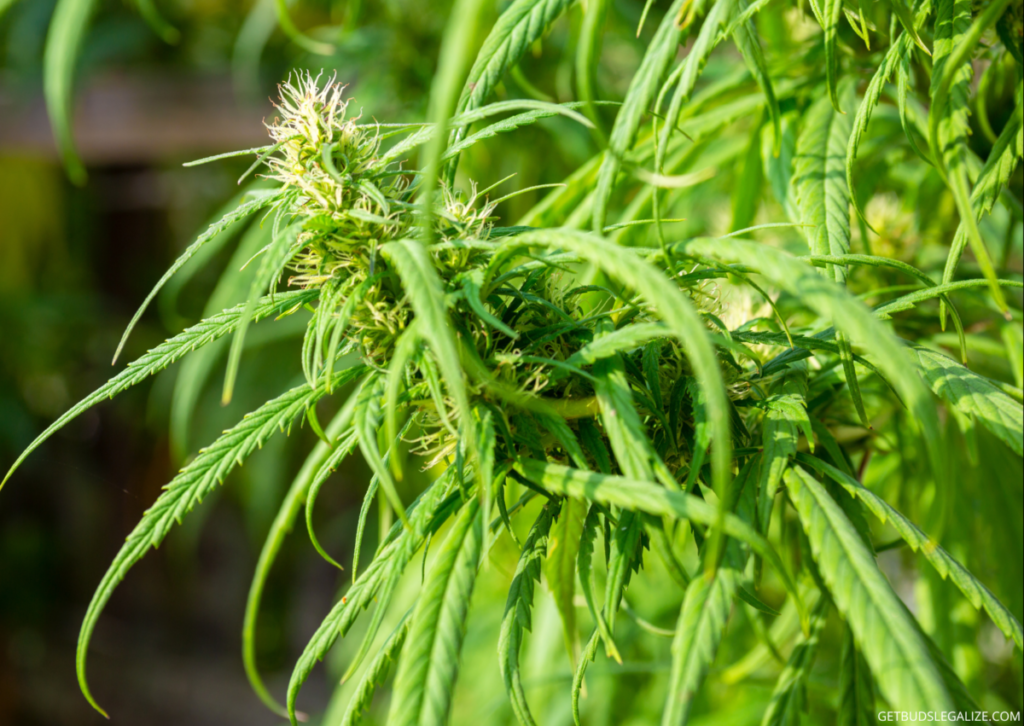
Treating powdery mildew on outdoor plants can be more difficult than indoors, as you have less control over the environmental factors that influence its development. However, you can still take some measures to treat it:
1. Apply Trifecta Crop Control Super Concentrate as a Preventative:
Trifecta Crop Control Super Concentrate is a more potent version of Trifecta Crop Control that is designed for outdoor use. It contains higher concentrations of essential oils, soap, vinegar, and citric acid that can kill powdery mildew spores and prevent them from germinating. It also helps your plants resist other pests and diseases.
You can use Trifecta Crop Control Super Concentrate as a preventative measure by spraying your plants once every two weeks throughout their growth cycle.
2. Be Aware of The Season:
Powdery mildew is more likely to occur in the spring and fall when the temperatures are moderate and the humidity is high. You should monitor your plants closely during these seasons and spray them with a fungicide if you notice any signs of infection.
You should also avoid planting your cannabis plants in shady or damp areas, as these conditions favor it development.
2. Remove All Dry Leaves:
Dry leaves can harbor powdery mildew spores and provide a source of infection for your plants. You should remove all dry leaves from your plants and from the ground around them. You should also prune any excess foliage from your plants to improve air circulation and light penetration.
3. Space Plants far Enough Apart:
Spacing your plants far enough apart can help prevent powdery mildew from spreading from one plant to another. It can also improve air circulation and light penetration, which can reduce the chances of infection. You should space your plants according to their size and growth habit, but generally at least three feet apart.
4. Use Biological Phytosanitary Treatments:
Biological phytosanitary treatments are natural products that contain beneficial microorganisms that can compete with or antagonize powdery mildew fungi. Some examples are Bacillus subtilis, Trichoderma harzianum, or Ampelomyces quisqualis. These products can help prevent or reduce infection by colonizing the plant’s surface and creating a protective barrier against fungi. You can apply these products as a soil drench or a foliar spray according to the product instructions.
Disease Cycle for Powdery Mildew
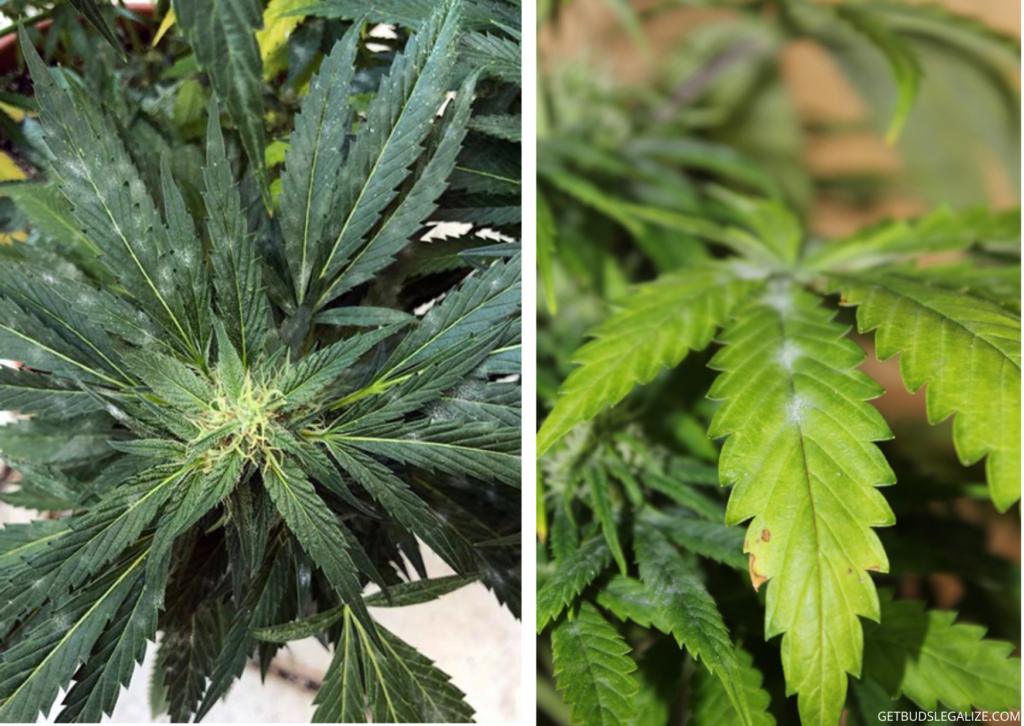
The disease cycle for powdery mildew is as follows:
- The spores are released from infected plant parts or debris into the air. They can be carried by wind, insects, or water to new hosts.
- The spores germinate on the surface of susceptible plant tissues, such as leaves, stems, flowers, or fruits. They do not need free water to germinate, but high humidity and moderate temperatures favor their development.
- The spores produce hyphae, which are thread-like structures that grow and branch on the plant surface. They form a white or grayish coating that gives the disease its name.
- The hyphae penetrate the plant cells and extract nutrients from them, causing symptoms such as chlorosis (yellowing), necrosis (browning), distortion, wilting, or premature senescence (aging).
- The hyphae also produce conidia, which are asexual spores that can detach and spread to new plant parts or hosts. Some powdery mildew fungi also produce sexual spores called ascospores, which can survive in plant debris over winter and initiate new infections in spring.
- The disease cycle can repeat several times during the growing season, depending on the environmental conditions and the host’s susceptibility.
How Long Does It Take For a Plant to Recover from Powdery Mildew?
The recovery time of a plant depends on several factors, such as the severity of the powdery mildew infection, the type of plant, the environmental conditions, and the treatment methods used.
Generally, it can take anywhere from a few days to several weeks, depending on how early and effectively the disease is controlled.
ILGM Plant Protector

- Protect your cannabis from diseases and harmful pests.
- Contains three 20 ml bottles.
- Enough supplies to protect 20 plants.
- It can be used in soil, hydroponic, and all other growing mediums.
ILGM Fertilizer

- From seedling to harvest, give your plants everything they need.
- Enough for feeding at least 5 plants.
- Discounted Package Deal
- Works well in soil, hydroponics, and other growing mediums.
- The best way to treat your plants














